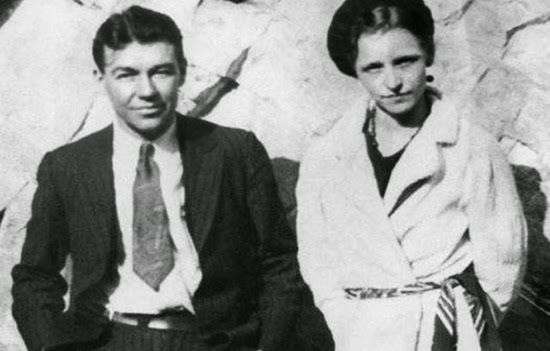
Idolized and villainized, the American gangster is a character as iconic as the cowboy. Though organized crime tends to be a boys' club, there have been a slate of deadly women who have broken into its ranks. You know John Dillinger, Al Capone, and Bugsy Siegel. But do you know Stephanie St. Clair or The Pretty Pants Bandit? We think it's time that you did.
1. Bonnie Parker
Photo: Wikimedia Commons
Undoubtedly the most famous of the female American gangsters, Parker was half of the iconic crime duo Bonnie and Clyde. The two were notorious bank robbers in the "public enemy era" of 1931 to 1934, when the exploits of outlaws made them celebrities.
Parker was born in Rowena, Texas, where she earned a reputation for being smart and outspoken. She met Clyde Barrow in 1930. Though she was married, the two hit it off immediately. Apart from their robberies and killings, the legend of Bonnie and Clyde grew in part because of a photo shoot they did near their Joplin, Missouri hideout, images that still inspire re-imaginings of their lives. But those lives were cut short in a gruesome shootout with police in 1934. She was 23; he was 25.
Parker has been portrayed by Dorothy Provine in 1958's The Bonnie Parker Story, by Tracey Needham in the 1992 made-for-TV movie Bonnie & Clyde: A True Story, and by Holliday Granger in the 2013 mini-series Bonnie & Clyde. But best remembered is the sultry turn of Faye Dunaway in the two-time Oscar-winning biopic Bonnie & Clyde.
2. Stephanie St. Clair
She was called "Queenie" in much of Manhattan, but in her Harlem home she was known only as Madame St. Clair. An immigrant of French and African descent, St. Clair set up her numbers bank ten years after moving to the U.S. and became fiercely protective of her neighbourhood. She testified against corrupt cops, getting them fired from the force. Even more impressive, she thwarted the invasion of downtown mobsters once the end of Prohibition sent them uptown in search of new revenue.
With the help of her chief enforcer Ellsworth "Bumpy" Johnson and an alliance with Lucky Luciano, Madame St. Clair kept the likes of Dutch Schultz out of Harlem. She later gloated when Schultz lay dying from a gunshot wound, sending a note to his hospital bed that read, "As ye sow, so shall ye reap." When she retired, St. Clair handed her operation over to Bumpy, who became known as The Harlem Godfather.
St. Clair has been immortalized in two films to date. In 1984, Novella Nelson played her in The Cotton Club. In 1997, she was portrayed by Cicely Tyson in Hoodlum.
3. Opal "Mack Truck" Long
Russell Clark, Opal "Mack Truck" Long's spouse. Photo: Wikimedia Commons.
Believed to be born in Texas, Long earned the nickname "Mack Truck" because of her size (though it's said no one called her this to her face). She was a member of John Dillinger's Terror Gang, brought in as the wife of Russell Clark. A caretaker by nature, Long - who preferred to be called Bernice Clark - happily cleaned the hideout and cooked for the whole gang, who she considered family.
Things soured when her husband was arrested in Tucson, Arizona on January 25, 1934. She attacked the police who made the arrest, and later begged Dillinger for money to fund an appeal of Clark's case. Her demands ultimately ostracized her from the group. That summer she, too, was arrested. She never squealed on her cohorts, yet earned parole by November 1934. She lived out her days in Chicago.
4. Helen Gillis
Photo: Find A Grave
At 16, Helen Wawrzyniak made a fateful move marrying Lester Gillis, the man who came to be known as Baby Face Nelson. By 20, she had two babies - and a spot on the "shoot to kill" list of Public Enemies, thanks to him. She's regarded more as an accomplice than a gangster in her own right, but Gillis was present at the "Battle of Barrington" in Illinois on November 27, 1934. There, Nelson spotted a cop car, and with Gillis and fellow thug John Paul Chase in tow, chased it down, guns blazing. This led to a shootout that killed Nelson along with two police officers.
Gillis earned her place on the Public Enemies list by harbouring her dying husband. She surrendered on Thanksgiving Day. Bitter over Nelson's ugly demise, Gillis testified against Chase, helping secure his life sentence. She died more than fifty years later, but was buried next to her beloved Baby Face in Chicago's St. Joseph's Cemetery.
5. Ma Barker
Photo: Wikimedia Commons
Don't let the nickname of this godmother of crime throw you. Arizona Donnie Barker (aka Kate Barker) was considered a merciless matriarch. At 19, Arizona Clark married George Barker and the two went on to have four sons: Herman, Lloyd, Arthur, and Fred. But the Barkers weren't just a family; they were a crime family, pulling off highway robberies as early as 1910.
These heists led to murder, and soon captivated the press and public of the Midwest. But fate took a turn for the Barkers in 1927, when Herman committed suicide to avoid arrest. Shortly thereafter, the other three sons ended up in jail. Arizona faced some lean years, but she reunited with Fred upon his release in 1931, spurring a new crime spree that led to her death and his.
Both were killed when the FBI stormed her hideout in Lake Weir, Florida on January 8, 1935. Posthumously, her role in the Barker gang has been the matter of debate. Those close to the family insisted she could have played no active role in the criminal dealings of her sons, but J. Edgar Hoover called her "the most vicious, dangerous and resourceful criminal brain of the last decade."
The legend of Ma Barker has inspired a slew of malevolent mothers in film and television, from ones seen in the James Cagney gangster classic White Heat to the children's cartoon show Duck Tales. But the character of Ma Barker would go on to be played by Jane Crowley in 1959's The FBI Story, Shelley Winters in 1970's Bloody Mama, and Theresa Russell in 1996's Public Enemies.
6. Pearl Elliott
Photo: Oocities
She shared ties with John Dillinger and Harry Pierpont, but Elliott was no hanger-on or gun moll. Instead, she was a notorious madam. She owned a whorehouse in Kokomo, Indiana that boasted police protection. To help keep things at her rural brothel safe, they had a system where she'd shine a flashlight out a window to signal for help should some john get out of hand.
Her establishment also served as a hideout for Pierpont's crew following a 1925 bank robbery. Later, her role as "treasurer" for Dillinger earned her a spot on the 1933 Public Enemies list, which ordered officers to "shoot to kill." Despite her illegal operation and dangerous dealings, Elliott did not die in a hail of gunfire or in prison. She passed away on August 10, 1935, from an illness that may have been cancer. She was 47.
7. The Pretty Pants Bandit
Photo: New York Daily News
Described as an attractive brunette with brown eyes and a habit of carrying two guns, this outlaw known as Marie Baker grabbed headlines in 1933 for a string of shop robberies committed by her Pants Gang. Baker earned her nickname for her bizarre demand to the shops' clerks. Once all other customers had left, this lingering lady would draw her weapons and command, "Take off your pants!" Those too shy to oblige were forcibly helped, with Baker sneering she couldn't be shocked.
The Miami News reports that it was vanity that eventually brought her down. While checking her makeup during a butcher shop heist, Baker allowed a hostage to run free. She was soon caught and booked as Marie Baker. Later, it was uncovered she was in fact Mrs. Rose Durante, who would ultimately serve three years before vanishing into obscurity.
8. Virginia Hill
Photo: Mafia Wikia
Known as The Flamingo as well as "Queen of the Gangster Molls," Hill became notorious as the girlfriend of Brooklyn mobster Bugsy Siegel. She came from a poor background, telling people she didn't own a pair of shoes until age seventeen. Born in Alabama and raised in Georgia, she moved to Chicago to seek fame and fortune. She found a bit of both working as an accountant for Al Capone.
When she moved to Los Angeles to pursue her acting ambitions, she met Siegel, for whom she'd soon be lover and courier. He'd later name his Flamingo Hotel in Las Vegas after her. But this proved a bust business, bringing an abrupt end to Siegel's career, and arguably his life. He was gunned down in Hill's Hollywood home on June 20, 1947.
Hill was coincidentally out of the house, and claimed, "If anyone or anything was his mistress, it was that Las Vegas hotel. I never knew Ben was involved in all that gang stuff. I can't imagine who shot him or why." Her underworld dealings had her take the stand increasingly as the years went on. In 1961, Hill was found dead in an Austria snowdrift, the victim of an apparent overdose of sleeping pills - although some speculate this too was a hit.
Though Hill never made it as an actress, she did make it to the big screen in 1991, when Annette Bening portrayed her in Bugsy.
9. Arlyne Brickman
Photo: Wikia
Born in 1933 to a Jewish family in East Harlem, Brickman grew up idolizing the glamor and thrills of Virginia Hill. "In my eyes, here was a broad that really made good," she later told biographer Teresa Carpenter. She worked for the mob as a numbers runner, drug dealer, and loan shark. Yet her Jewish heritage was an obstacle to rising up the ranks of the Sicilian-run crime syndicate. Still, the money and power was good enough to please her.
Years later, after a loan shark threatened her daughter, Brickman turned informant. Her spying and testimony ultimate led to the conviction of Anthony Scarpati and several associates for racketeering. In 1992, Brickman told her story in Mob Girl: A Woman's Life In the Underworld.
10. Evelyn "Billie" Frechette
Photo: awesomestories.com
She became infamous as John Dillinger's devoted girlfriend, but Frechette came from an unexpected background for a gun moll. A child of French and Native American descent through the Menominee tribe, she attended Catholic grade school, then went on to graduate from high school. Even with an education, finding work was difficult, which led Frechette to Chicago. After her first husband was jailed for a post office robbery, Frechette met Dillinger, and travelled with him through a cross-country crime spree. The pair survived several shootouts.
She was later convicted for harbouring a fugitive, and served two years in prison, during which Dillinger died. Upon her release in 1936, Frechette spun her criminal past into a new career, setting out on a lecture tour called "Crime Does Not Pay." She died of cancer 33 years later.

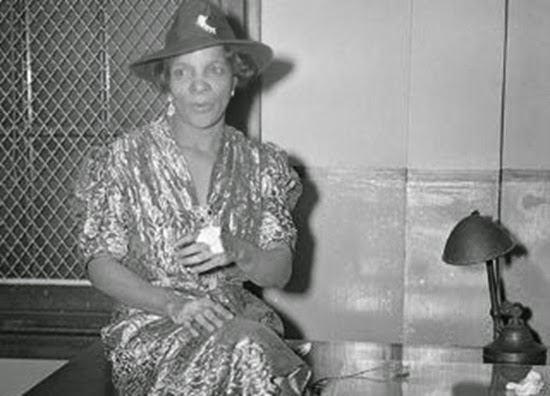

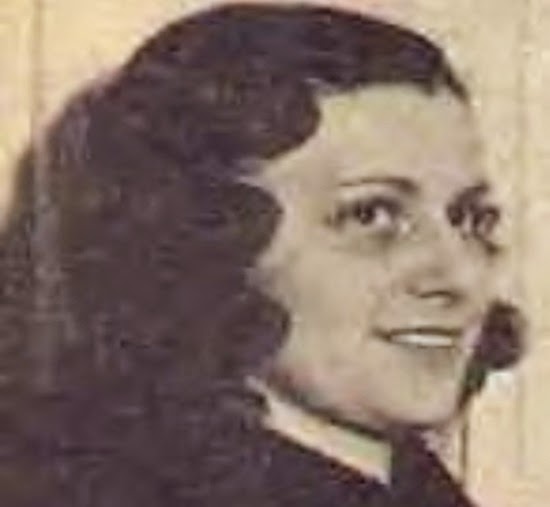
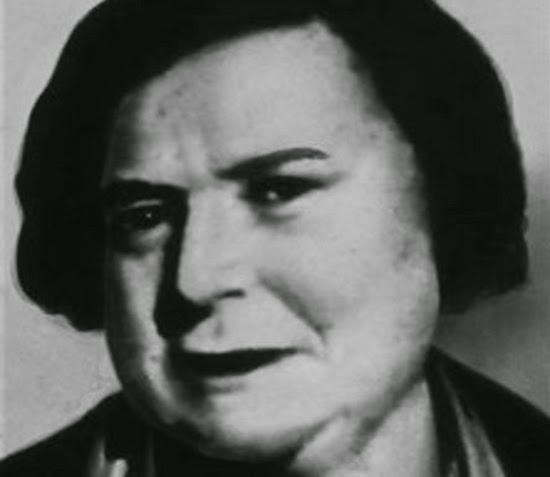
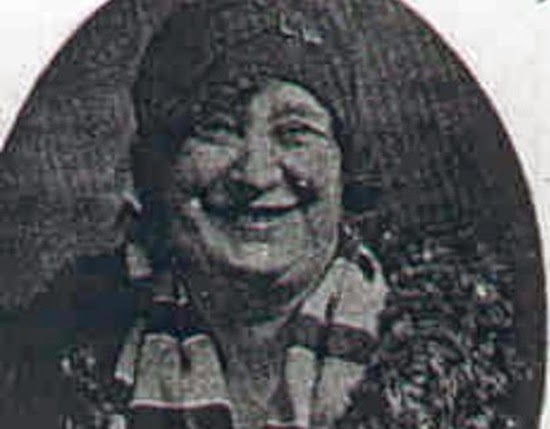
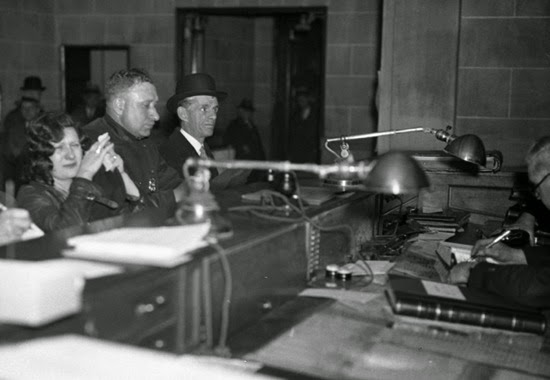

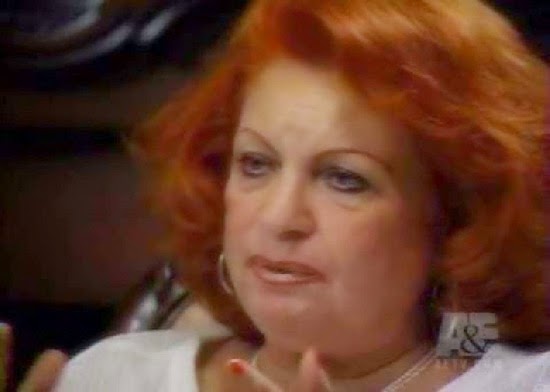
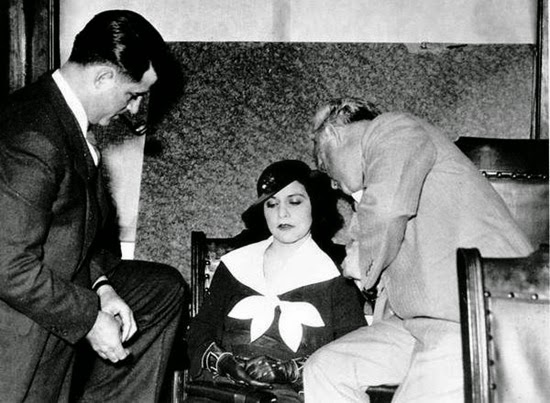
No comments:
Post a Comment
Please adhere to proper blog etiquette when posting your comments. This blog owner will exercise his absolution discretion in allowing or rejecting any comments that are deemed seditious, defamatory, libelous, racist, vulgar, insulting, and other remarks that exhibit similar characteristics. If you insist on using anonymous comments, please write your name or other IDs at the end of your message.